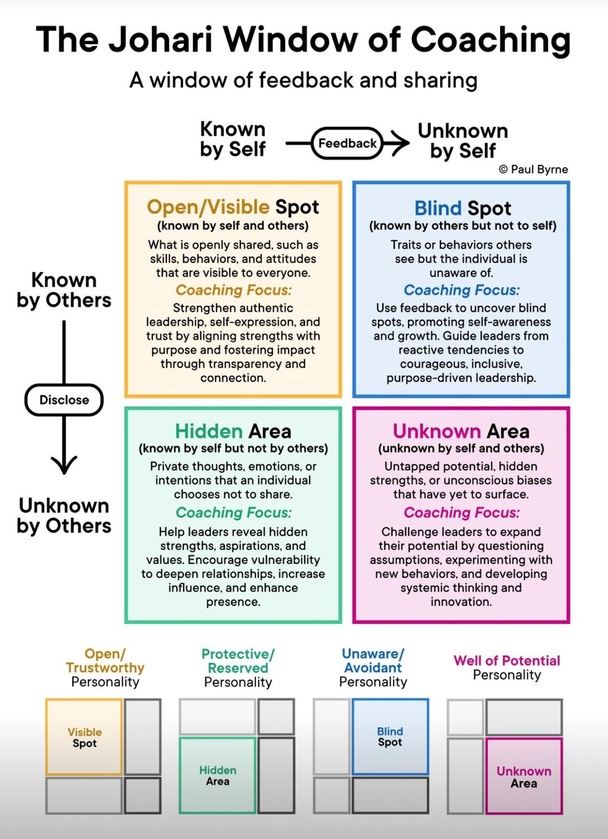Summary of Topic:
The Johari Window is a tool that helps individuals understand themselves better through feedback and self-disclosure. It’s divided into four quadrants:
- Open Area (known to self and others) – What you’re aware of and others see too.
- Hidden Area (known to self but not others) – What you choose not to share.
- Blind Spot (not known to self but known to others) – What others see but you don’t realize.
- Unknown Area (not known to self or others) – What hasn’t yet been discovered.
The goal is to expand the Open Area by giving and receiving feedback, fostering trust, and promoting personal growth.
Application in Your Life:
Identify a trusted colleague or mentor and ask for constructive feedback. Start by sharing something about yourself (reduce the Hidden Area) and ask for insights into how you’re perceived (reduce the Blind Spot). Over time, this transparency improves communication and strengthens relationships.
Reflection Points:
- What’s one piece of feedback I’ve received that helped me see my blind spots?
- How can I create a safe environment for open feedback with my team?
- What steps can I take to increase the Open Area and improve my self-awareness?
Teaching Approach:
- Explain the Concept: Use a simple analogy—like cleaning a foggy mirror, honest feedback helps us see ourselves more clearly.
- Activity: Have participants pair up and share one strength they feel confident about and one area they’d like feedback on. Then, discuss how the Johari Window helps them expand their Open Area.
- Follow-Up: Encourage them to seek feedback regularly and track how it impacts self-awareness and performance over time.





















